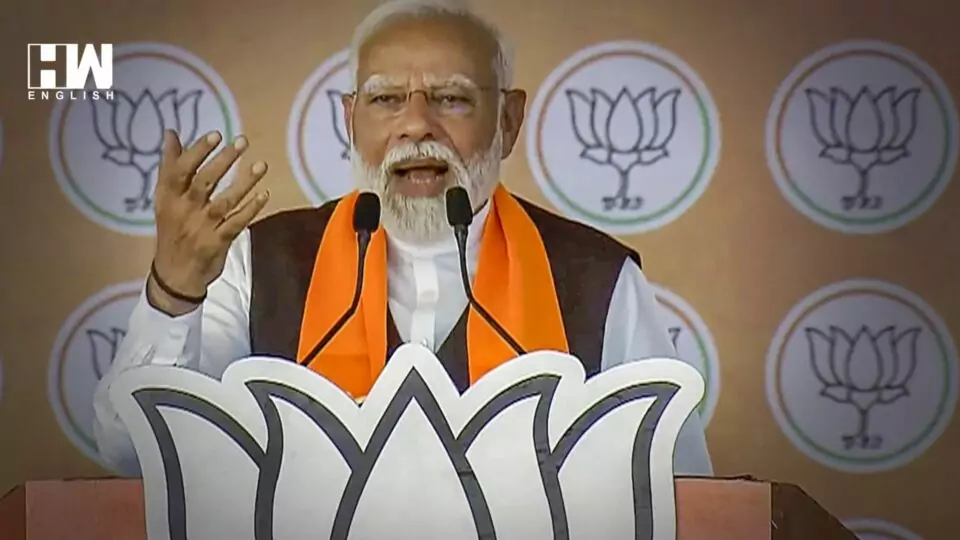Less than two months ago, the BJP replaced Chief Minister Manohar Lal Khattar with Nayab Singh Saini. However, this change has not stabilized the government. In a significant blow, three Independent MLAs have withdrawn their support, reducing the government to a minority. This crisis is a symptom of larger problems plaguing the state, particularly in rural areas where there is widespread unrest due to agrarian distress and a severe lack of job opportunities.
The Congress, riding on anger amongst Jats and inflation-unemployment, hopes to make a significant dent in the BJP tally. On the other hand, the BJP hopes the split of Opposition votes between the Congress, the Jannayak Janta Party, and the Indian National Lok Dal will help contain the damage.
In 2019, the BJP swept the state contesting alone, riding on the nationalist fervour generated after the Balakot airstrikes. The split in the Chautala family, with Dushyant Chautala forming the JJP, also helped it split Opposition votes. The BJP won all 10 seats with a 58 percent vote share, reducing the INLD to just two percent.
The JJP made its debut with a five-percent vote share, while the Congress bagged 28 percent of the votes.Haryana has been a bellwether state for over two decades, often voting for the party that wins at the national level. But this time, several factors are working against the BJP.
What’s Going Wrong For the BJP in Haryana?
According to QUINT, the job crisis is the most pressing issue. According to the Centre for Monitoring Indian Economy (CMIE), Haryana’s unemployment rate stands at a staggering 37.4%, the highest in the country. Although the Haryana government disputes these figures, the Periodic Labour Force Survey reports an unemployment rate of 9%, more than double the national average.
The desperation for employment has driven young men from Kaithal and Kurukshetra to Russia, where they were duped by agents and are now forced to fight in the Russian army against Ukraine. Even MGNREGA workers in Haryana are struggling, with many not receiving work under the Act.
The desire for stable government jobs is tightly linked to agrarian distress. Youth from agrarian families no longer see farming as a viable profession. The combination of high unemployment and agrarian distress is unravelling the BJP’s social engineering strategy in the state.
After a decade in power in Haryana, the BJP is facing significant challenges as the Lok Sabha elections approach. The party maintained control by consolidating non-Jat communities against Jat domination. Jats, who make up 27% of the state’s population, have historically dominated Haryana’s politics.
As per reports, the BJP’s strategy of leveraging Upper Castes and OBCs against Jats, aided by a split in Jat votes among Congress, INLD, and JJP, is now unravelling.
The BJP’s social engineering has led to acute alienation among Jats, who have been central to three major protests against the government: the 2016 Jat reservation agitation, the 2020-21 farmers’ protest, and the 2023 wrestlers’ protest. The severe unemployment crisis and agrarian distress have also turned Jats decisively against the BJP.
ALSO READ: Women Voters Outnumber Men In Fifth Phase Of Polls
Furthermore, the job crisis and agrarian distress are affecting non-Jat communities just as severely, especially in rural areas. This has led to increased discontent among OBCs, Dalits, and Upper Castes in villages, weakening the BJP’s ability to consolidate non-Jats against Jats. As a result, caste polarization has diluted, presenting a significant challenge for the BJP in the upcoming elections.
Discontent among Jats prevented the BJP from achieving a simple majority in the 2019 state elections, falling short by six seats. The JJP, with 10 MLAs, rescued the BJP, enabling it to form the government again. This alliance, however, further alienated the Jat community as it consolidated OBCs, SC-STs, and upper castes against Jats. The new BJP Chief Minister, Nayab Singh Saini, is also from the OBC community.
The BJP faces a tough battle in Haryana, with Congress poised to deliver a significant blow. BJP strategists are hoping to mitigate losses through the division of opposition votes. As a bellwether state, Haryana is crucial for the BJP, which needs to secure more seats than Congress. The party faces an even bigger challenge in the upcoming Vidhan Sabha polls, battling a decade-long anti-incumbency. To improve their prospects in the state elections, the BJP needs a strong performance in the general elections to set the tone.
Will This Impact Lok Sabha Elections?
As Haryana prepares for the Lok Sabha elections, the impact of recent political developments remains uncertain. With Assembly elections just months away, some disaffected voters might reserve their discontent for the state polls, continuing to support Prime Minister Modi at the national level. The key question is: how many of these voters will turn against the BJP now, and how many will wait until the Assembly elections later this year?
This will determine whether the BJP faces minor seat losses or a significant setback. In 2019, the BJP swept all 10 seats in Haryana, buoyed by the post-Pulwama Modi wave. They secured massive margins in Karnal and Faridabad, winning by over 6 lakh votes and significant margins of 3-5 lakh in six other seats. The margins were narrower in Rohtak (7,503) and Sonepat (1.6 lakh), where Congress heavyweights, the Hoodas, were contesting.
As an independent media platform, we do not take advertisements from governments and corporate houses. It is you, our readers, who have supported us on our journey to do honest and unbiased journalism. Please contribute, so that we can continue to do the same in future.

